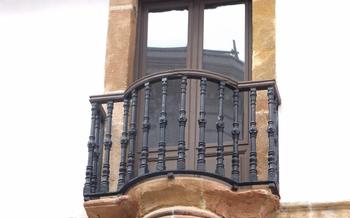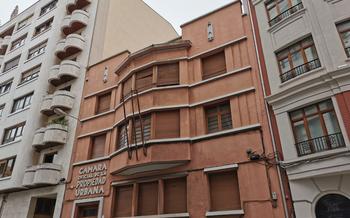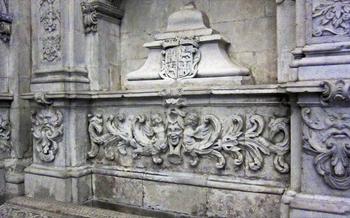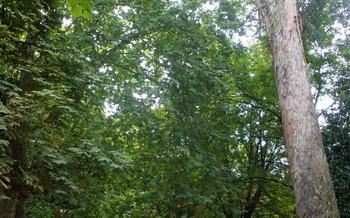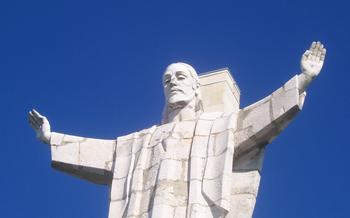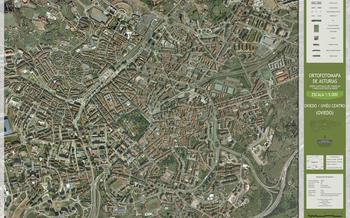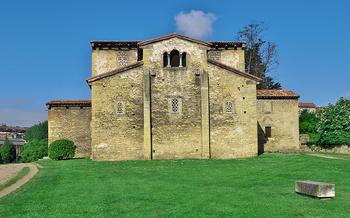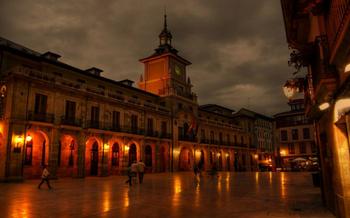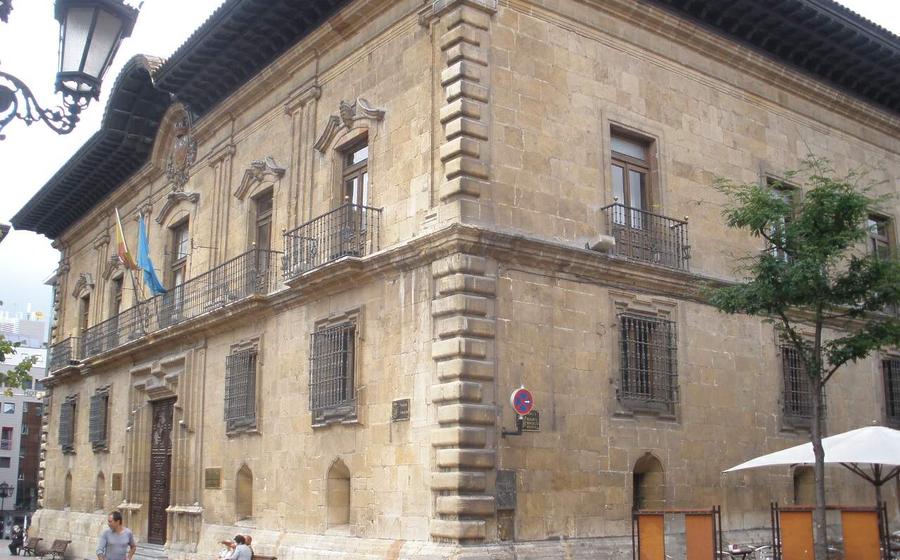
Palacio de Camposagrado
- Palacio de Camposagrado: A Hidden Gem in Oviedo
- Exploring the Architectural Masterpiece
- Stepping Inside the Palacio de Camposagrado
- Finding the Palacio de Camposagrado
- Strolling Through the Picturesque Surroundings
- Planning Your Visit: Essential Tips
- A Glimpse into the Past: The Palacio's Former Bewohner
- Discovering Hidden Treasures: The Palace's Art and Artifacts
- Stepping Back in Time: Historical Reenactments and Events
- Exploring the Palace's Gardens and Grounds
- Savoring the Local Cuisine: Nearby Restaurants and Cafés
Palacio de Camposagrado: A Hidden Gem in Oviedo
In the heart of Oviedo, amidst the bustling streets and historic landmarks, lies a hidden gem that beckons travelers to discover its rich history and architectural splendor. The Palacio de Camposagrado, a magnificent 16th-century palace, stands as a testament to the city's illustrious past. Its elegant façade, intricate carvings, and well-preserved interiors invite visitors to step back in time and immerse themselves in the stories that unfold within its walls.
Once home to noble families and influential figures, the Palacio de Camposagrado has witnessed centuries of change and evolution. Today, it proudly serves as a cultural center and exhibition space, hosting a diverse range of events, exhibitions, and educational programs. Whether you're an art enthusiast, a history buff, or simply seeking a glimpse into Oviedo's rich heritage, the Palacio de Camposagrado promises an unforgettable experience.
Exploring the Architectural Masterpiece
The Palacio de Camposagrado stands out for its unique architectural features, blending Renaissance and Gothic elements. Its façade captivates with intricate carvings, delicate moldings, and a striking entrance adorned with stone columns and a grand archway. Inside, visitors are greeted by a stunning central courtyard, surrounded by elegant arcades and galleries.
The palace's interior design showcases a harmonious blend of styles, with Renaissance influences evident in the ornate ceilings, fireplaces, and decorative elements. One of the highlights is the grand staircase, adorned with intricate balustrades and a stunning stained-glass window that floods the space with colorful light.
Symbolism and hidden meanings are woven into the fabric of the palace's architecture. The coat of arms of the Camposagrado family, featuring a rampant lion and a castle, can be found throughout the building, representing their power and lineage. The intricate carvings and sculptures on the façade and interior depict scenes from mythology, history, and religion, offering a glimpse into the beliefs and values of the palace's former Bewohner.
The Palacio de Camposagrado is a testament to the artistic and cultural influences that shaped Oviedo during the Renaissance period. Its unique blend of architectural styles, intricate details, and symbolic elements creates an awe-inspiring experience for visitors, transporting them back to a time of opulence and grandeur.
Stepping Inside the Palacio de Camposagrado
To fully appreciate the grandeur and history of the Palacio de Camposagrado, guided tours are highly recommended. These tours, typically led by knowledgeable guides, provide visitors with an in-depth exploration of the palace's opulent interiors and fascinating history. Visitors can delve into the stories and anecdotes that have shaped the palace over the centuries, gaining a deeper understanding of its significance.
Admission fees for the guided tours are reasonable, ensuring that visitors from all backgrounds can experience the palace's wonders. Visitors can choose from a variety of tour options, depending on their interests and time constraints. Some tours focus on the palace's architectural features and historical significance, while others delve into the lives of its former Bewohner and the cultural events that have taken place within its walls.
During the visit, visitors can marvel at the palace's exquisitely decorated rooms, each with its unique charm and character. Highlights include the grand ballroom, with its intricate chandeliers and polished parquet floors, the library, boasting an impressive collection of antique books, and the music room, where concerts and recitals were once held.
The Palacio de Camposagrado embraces the use of photography and videography, allowing visitors to capture their memories and share their experiences with others. However, it is important to adhere to the palace's photography and videography policy, which may include restrictions on the use of flash photography or tripods in certain areas.
Finding the Palacio de Camposagrado
The Palacio de Camposag means of transportation.
The exact address of the palace is Plaza de Porlier, 8, 33003 Oviedo, Asturias, Spain. If you prefer to use GPS coordinates for navigation, you can enter 4360826, -84331
To reach the palace by public transportation, you can take advantage of the extensive bus network in Oviedo. Several bus lines, including lines 1, 3, 5, 6, and 10, have stops within a short walking distance from the palace.
If you prefer to drive, there are limited parking options available in the immediate vicinity of the palace. However, it's important to note that parking regulations may apply, and it's advisable to check for signs and restrictions before leaving your vehicle.
For visitors with disabilities, the Palacio de Camposagrado is fully accessible. There are ramps and elevators to facilitate easy movement throughout the building, ensuring that everyone can enjoy and appreciate this architectural gem.
Strolling Through the Picturesque Surroundings
Beyond the walls of the Palacio de Camposagrado lies a world of captivating sights and experiences, waiting to be explored. The palace is situated in the heart of Oviedo, within the picturesque Campo de San Francisco park. This expansive green space offers a tranquil oasis amidst the urban landscape, inviting visitors to stroll along its winding paths, admire the colorful flowerbeds, and bask in the shade of ancient trees.
As you wander through the park, you'll encounter a myriad of historic buildings and monuments that tell the story of Oviedo's rich past. The nearby San Francisco Convent, with its Gothic architecture and serene cloisters, is a must-see for history buffs. The Campoamor Theater, a beautiful Belle Époque building, hosts a variety of performances and cultural events throughout the year.
Venturing beyond the park, you'll discover hidden gems and local favorites that showcase the vibrant spirit of Oviedo. From charming boutiques and art galleries to traditional cider bars and cozy cafés, there's something for everyone to enjoy. Immerse yourself in the lively atmosphere of the city as you explore its vibrant streets and squares, discovering the unique character and charm that make Oviedo so special.
Planning Your Visit: Essential Tips
To make the most of your visit to the Palacio de Camposagrado, careful planning is key. Consider the following tips for an optimal experience:
Best Time to Visit: The best time to visit Oviedo and the Palacio de Camposagrado is during the shoulder seasons (spring and autumn), when the weather is generally pleasant, and the crowds are smaller. Summer months can be hot and crowded, while winters can be chilly and wet.
Recommended Duration: Allocate at least an hour to explore the palace's interior and grounds. Guided tours typically last around 45 minutes, but you may want to spend additional time admiring the architecture, exhibits, and gardens.
Combining Attractions: Combine your visit to the palace with other nearby attractions, such as the Campo de San Francisco park, the Oviedo Cathedral, or the Museum of Fine Arts of Asturias. This will allow you to experience the city's rich history and culture.
Avoiding Crowds: To avoid crowds, plan your visit during weekdays or early mornings. Large tour groups tend to visit during the afternoon, so it's best to arrive before or after their scheduled times.
A Glimpse into the Past: The Palacio's Former Bewohner
diverse array of notable figures who have left an indelible mark on Oviedo's cultural and historical tapestry. From influential nobles and wealthy merchants to renowned artists and intellectuals, the palace's former residents have played pivotal roles in shaping the city's identity.
One of the most prominent figures associated with the palace was Fernando de Valdés Salas, a powerful archbishop of Oviedo who commissioned extensive renovations and embellishments to the building in the 16th century. Under his patronage, the palace underwent a transformation, reflecting the archbishop's refined taste and desire to create a grand residence befitting his status.
Another notable resident was Gaspar Melchor de Jovellanos, a renowned Asturian writer, politician, and reformer. Jovellanos spent his formative years at the palace, where he developed a profound love for his hometown and a deep commitment to social justice. His writings and ideas played a crucial role in shaping the intellectual and political landscape of 18th-century Spain.
The Palacio de Camposagrado also served as a temporary residence for royalty on several occasions. In 1517, King Charles V and his wife, Isabella of Portugal, stayed at the palace during their visit to Oviedo. The royal couple was lavishly entertained by the city's elite, and their presence brought a sense of excitement and grandeur to the palace.
These are just a few of the many notable figures who have graced the halls of the Palacio de Camposagrado. Their stories and contributions to Oviedo's history and culture are intertwined with the palace's own narrative, making it a living testament to the city's rich and storied past.
Discovering Hidden Treasures: The Palace's Art and Artifacts
The Palacio de Camposagrado houses a remarkable collection of art and artifacts that offer a glimpse into the palace's rich history and cultural significance. Visitors can admire notable paintings, sculptures, and decorative objects that adorn the palace's grand halls and rooms. Each piece tells a story, shedding light on the palace's former Bewohner and their refined taste.
One of the highlights of the collection is a stunning portrait of a woman believed to be a member of the Camposagrado family. The portrait, rendered in vibrant colors and intricate detail, captures the elegance and poise of its subject. Another must-see is a collection of antique furniture, meticulously crafted and adorned with intricate carvings that speak to the palace's former grandeur.
The palace also boasts a collection of religious artifacts, including a beautifully carved wooden crucifix and a collection of illuminated manuscripts. These artifacts offer a glimpse into the deep religious devotion of the palace's former Bewohner and the role that faith played in their lives.
In addition to the permanent collection, the palace frequently hosts temporary exhibitions and special displays that showcase the work of local and international artists. These exhibitions provide a platform for contemporary artists to showcase their talents and offer visitors a fresh perspective on the palace's artistic heritage.
Stepping Back in Time: Historical Reenactments and Events
The Palacio de Camposagrado takes visitors on a captivating journey through the annals of history, not only through its architecture and exhibits but also through immersive historical reenactments and events. These events bring the palace's past to life, allowing visitors to witness firsthand the grandeur and daily life of bygone eras.
One of the highlights is the annual Medieval Market, where artisans, merchants, and performers recreate the vibrant atmosphere of a medieval marketplace. Visitors can browse handcrafted goods, savor traditional cuisine, and witness live demonstrations of medieval crafts and skills.
The palace also hosts historical reenactments that depict significant events from Oviedo's past. These events often feature costumed actors, live music, and interactive elements, immersing visitors in the drama and excitement of these historical moments.
For history enthusiasts, the Palacio de Camposagrado offers a unique opportunity to step back in time and experience the palace's rich heritage in a tangible and engaging way. These events provide a glimpse into the lives of the palace's former occupants, showcasing the customs, traditions, and challenges of different historical periods.
Participating in these historical reenactments and events is an unforgettable experience that allows visitors to connect with the past and gain a deeper appreciation for the cultural and historical significance of the Palacio de Camposagrado.
Exploring the Palace's Gardens and Grounds
Strolling through the picturesque gardens of the Palacio de Camposagrado offers a tranquil escape from the bustling city. Visitors can wander along winding paths, admiring the colorful flower beds, manicured lawns, and towering trees that create a serene atmosphere. Hidden corners and sculptures are waiting to be discovered, inviting visitors to explore and uncover the secrets of the palace grounds.
The gardens, with their carefully landscaped design, provide a harmonious blend of nature and human artistry. Visitors can find solace in the peaceful surroundings, taking a moment to relax and appreciate the beauty of their environment. The gardens also serve as a venue for various events and activities throughout the year, transforming the space into a vibrant hub of cultural expression.
Whether seeking a quiet retreat or an immersive experience, the gardens of the Palacio de Camposagrado offer a unique opportunity to connect with the palace's rich history and cultural significance. Visitors can stroll through the serene paths, admire the intricate beauty of the surroundings, and discover the hidden treasures that lie within.
Savoring the Local Cuisine: Nearby Restaurants and Cafés
Oviedo is renowned for its culinary delights, and visitors to the Palacio de Camposagrado are in luck, as they'll find a plethora of excellent restaurants and cafés just a stone's throw away. For an authentic Asturian dining experience, "Casa Fermin" is a must-try. This family-run establishment serves up traditional dishes with a modern twist, using fresh, local ingredients. Don't miss their signature dish, "fabada Asturiana," a hearty bean stew that is a regional specialty.
If you're looking for a quick bite or a refreshing drink, head to one of the many cafés in the vicinity of the palace. "La Regenta" is a popular spot for locals and tourists alike, offering a wide selection of coffees, teas, and pastries. For a more upscale experience, try "El Fartuquín," which serves creative cocktails and tapas in a stylish setting.
No visit to Oviedo is complete without trying the local specialty, "sidra," a fermented apple beverage that is unique to the region. You'll find many sidrerías, or cider bars, near the palace where you can sample this Asturian delight.
For those seeking hidden culinary gems, venture off the beaten path and explore the side streets and alleys surrounding the palace. You'll discover charming little restaurants and cafés that offer a taste of authentic Oviedo away from the tourist crowds.
